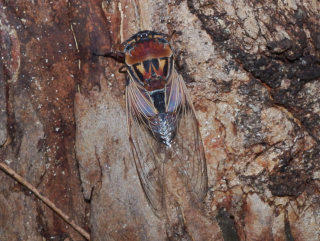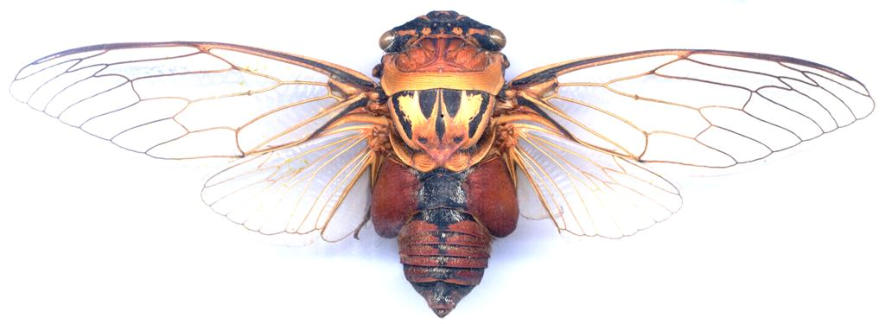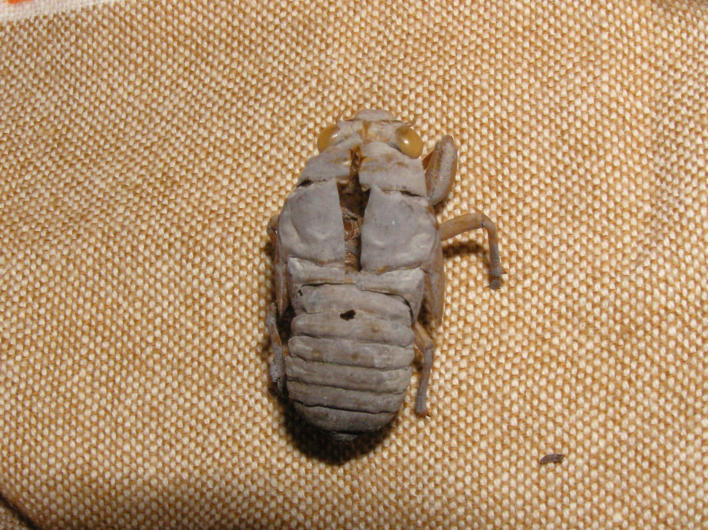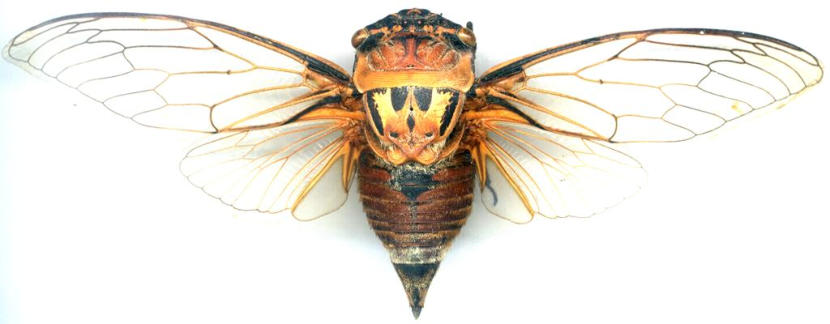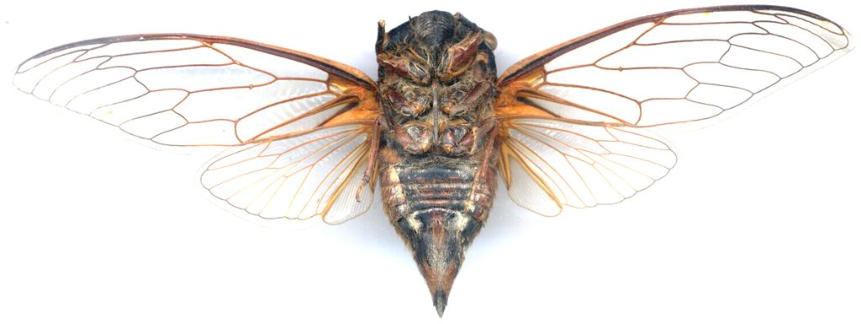Eastern Double Drummer
Thopha saccata (Fabricius, 1803)
© Popple Creative Industries 2014–2025


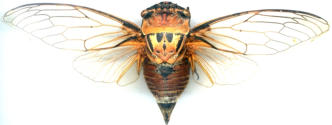
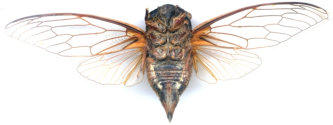
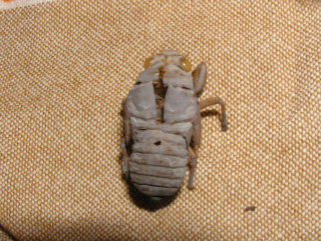
Male
Female
Species number (TNS):
003.
Fore wing length:
50–66 mm.
Distribution and seasonality:
Eastern Australia in four disjunct
populations: (1) north
Queensland, from near
Cooktown south to the Herbert
River district, including the
Atherton Tableland; (2) the
Sarina district in central
Queensland; (3) Kroombit Tops
via Gladstone; and (4) from near
Bundaberg in South-east
Queensland south to Moruya on
the south coast of New South
Wales, with populations
extending inland to the Great
Dividing Range. Adults can
occur from October to March
and are most prevalent from
December to February.
Notable localities:
Beerwah State Forest,
Brisbane’s coastal sand islands
(Bribie Island, Moreton Island,
North and South Stradbroke
Island), Girraween National Park
(via Stanthorpe), Royal National
Park (Sydney).
Habitat:
Tall open forests, dry sclerophyll
forests, heathlands with
emergent eucalypts and
woodland. Populations tend to
persist in the more extensive
patches of remnant vegetation,
including in areas of acreage,
but generally not in suburban
gardens.
Calling song and behaviour:
Males produce a loud, even
piercing, electric whine, which
fluctuates smoothly in pitch.
Singing occurs at intervals
throughout the day when the
weather is warm and sunny, and
also at dusk. Adults, including
calling males, tend to sit (usually
high) on the trunks of eucalypts.
Population sizes vary within
each locality from season to
season and sometimes
populations (and the piercing
calls that they produce) are
conspicuously absent with many
years passing between
appearances.
Colour variation:
Specimens may vary from
reddish-brown to dark reddish-
brown.
Similar species:
Northern Double Drummer.
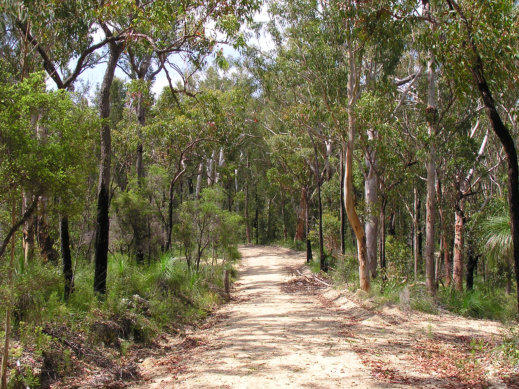
Habitat


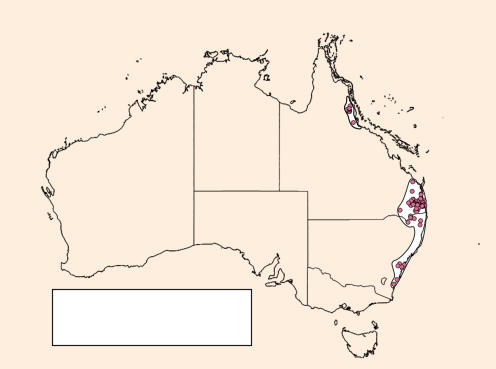


dr-pop.net database record
Currently known extent


